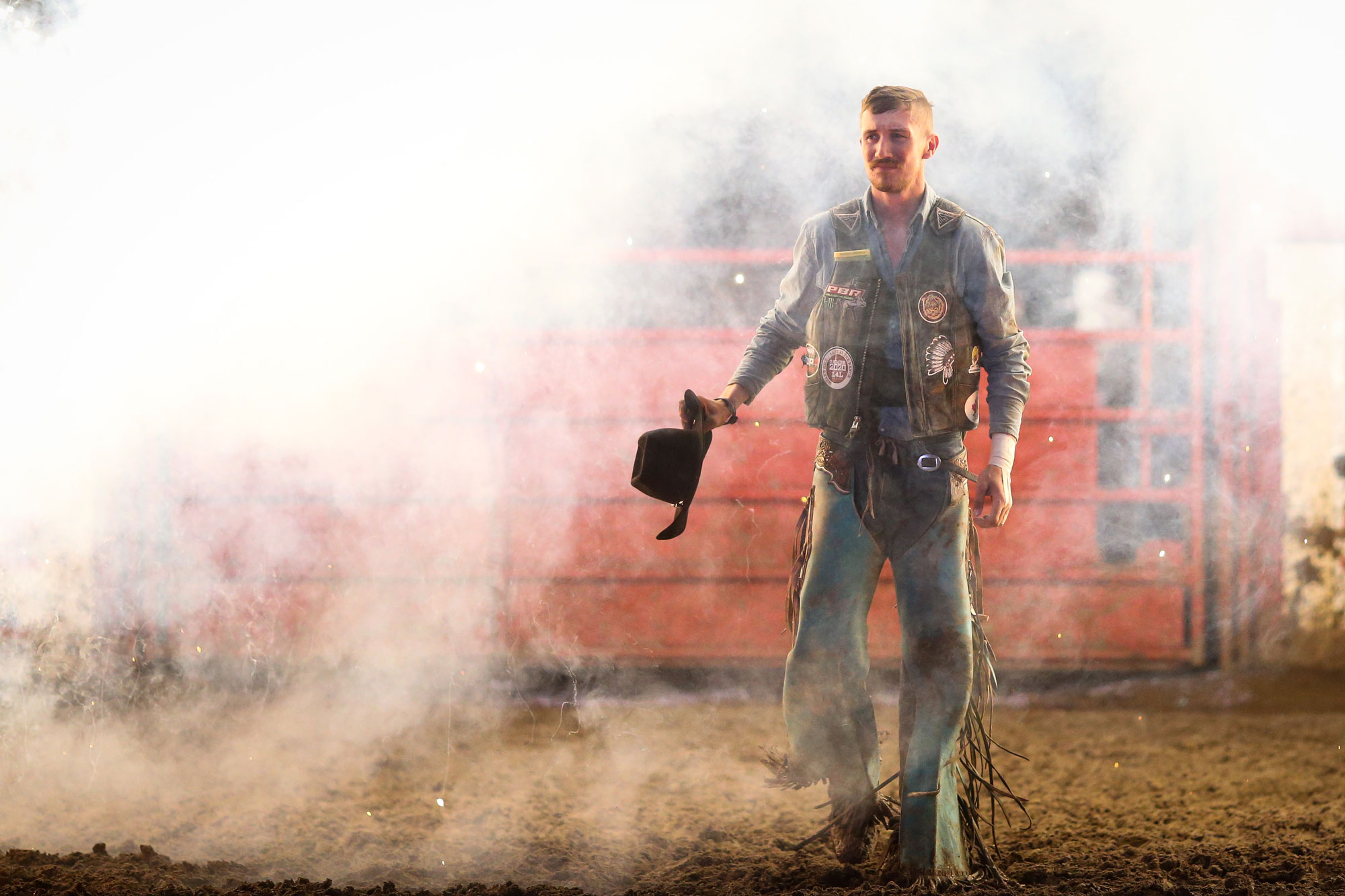EVENTS
Chuckwagon
racing
bareback
riding
saddle
bronc
team
roping
ladies
barrel racing
bull
riding
steer
wrestling
novice saddle
& bareback
boys steer
riding
kids wild
pony racing
BREAKAWAY
ROPING
tie down
roping
Womens Ranch
Bronc Riding
WILD WEST
PBR PONOKA
Ponoka Stampede has two performances of Chuckwagon racing for 6 straight nights.
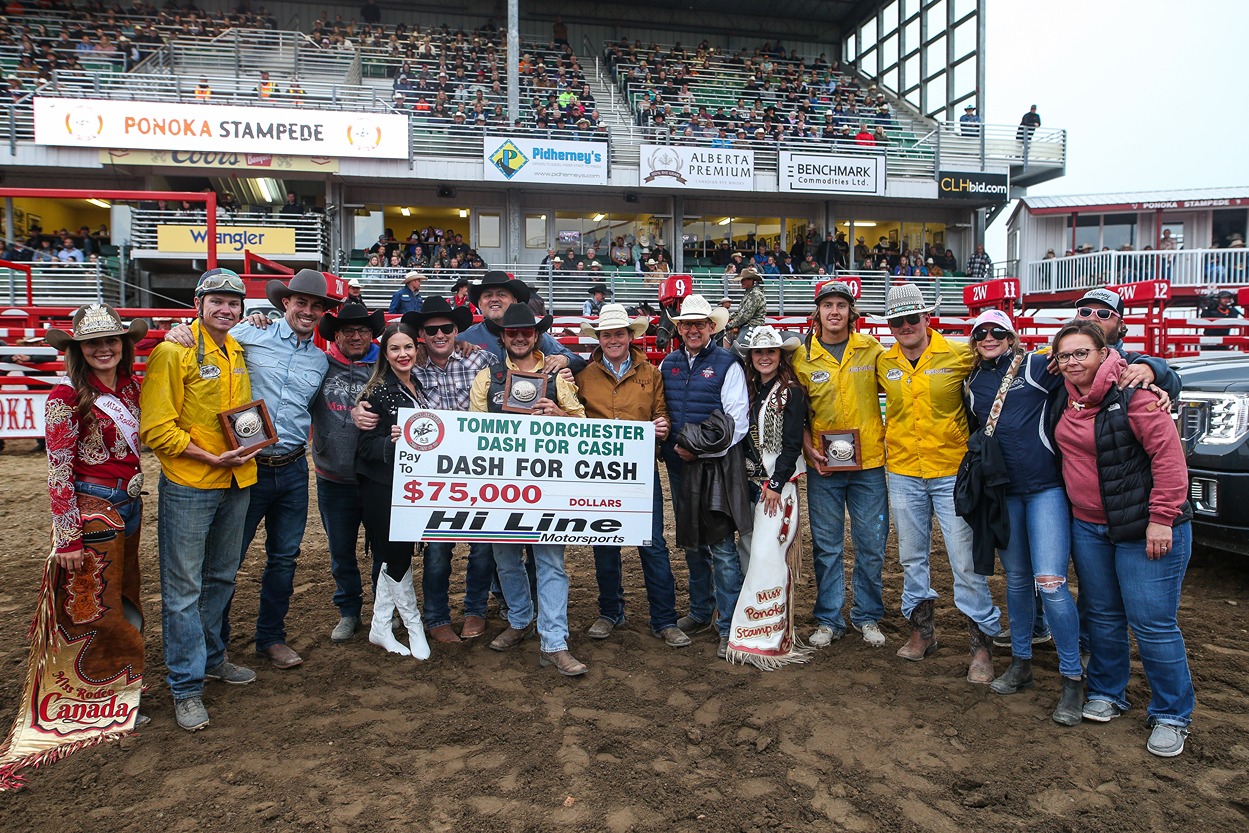
The action begins at 6:30pm with the All Pro Canadian Chuckwagons followed by the "Top Wagon Drivers in the World" of the World Professional Chuckwagon Association. Enjoy an evening packed with excitement as the four teams of four horses hitched to a chuckwagon race around our 5/8 mile track with outriders, thundering hooves and adrenaline overload in hopes to finish penalty free and have the fastest time of the night.
The Past Winners
Links
All Pro Canadian Chuckwagon & Chariot Association: Website
World Professional Chuckwagon Association: Website
Bareback Riding-In the bareback riding, instead of a saddle, the cowboy uses a double-thick leather pad called a rigging, which is cinched on the bronc's back.
No stirrups or reins are used in the event. To qualify, the rider must mark the horse out of the chute by keeping his spurs over the break of the shoulders until the first jump out of the chute is completed. The bareback rider will be disqualified if he touches the animal or equipment with his free hand or if he is bucked off before the eight-second ride is completed.
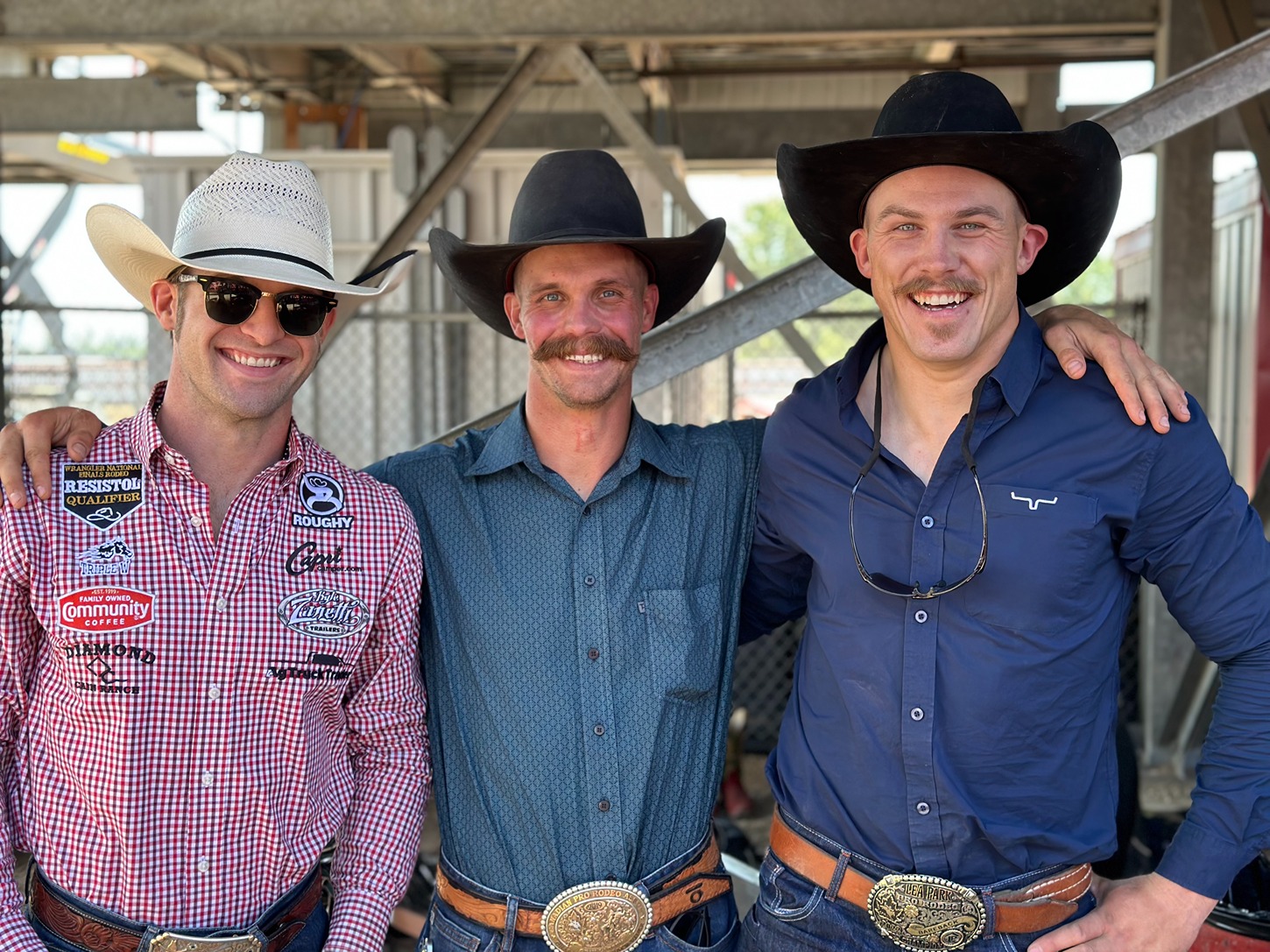
No other event in professional rodeo is as physically demanding as bareback riding. Using only one hand, the cowboy must hold onto the leather handhold of the rigging which is customized to snugly fit to the rider's grip. The rider tries to spur the horse on each jump, reaching as far forward as he can with his feet and then bringing his ankles up toward the rigging. It's the bareback rider's arm that takes all the stress as it absorbs most of the horse's bucking power. While his arm endures this incredible tension, his hand must remain intact within the rigging's handhold for the full eight seconds.
To complete a qualified riding in the saddle bronc riding, the rider must have his spurs over the break of the shoulders until the horse completes his first jump out of the chute.
He will be disqualified for touching any part of the animal or equipment, for losing a stirrup or for getting bucked off before the end of the eight-second ride. Each event requires a key component to achieve success and for saddle bronc competition, this component is maintaining a good rhythm. In time with the bronc's bucking action, the rider spurs from the animal's neck, using a full swing, toward the back of the saddle with his toes pointed outwards.

The equipment required by the saddle bronc competitor includes his own CPRA approved saddle, spurs with dull rowels (the revolving disk at the end of each spur), leather chaps and a braided rein. The length of the rein is crucial as it can mean the difference between staying on the bronc for the full eight seconds, or being tossed off. By adjusting his grip carefully, the cowboy can maintain his balance and, hopefully, prevent himself from being pulled out of the saddle and over the front end of the horse.
Two cowboys, a 'header' and a 'heeler' work to rope a steer in the shortest time possible.
The steer gets a head start before the header leaves the box. The header throws his rope to catch the steer with one of three legal head catches: around the head and one horn, around the neck, or around both horns. If the cowboy fails to give the steer the head start, the team receives a 10-second penalty.
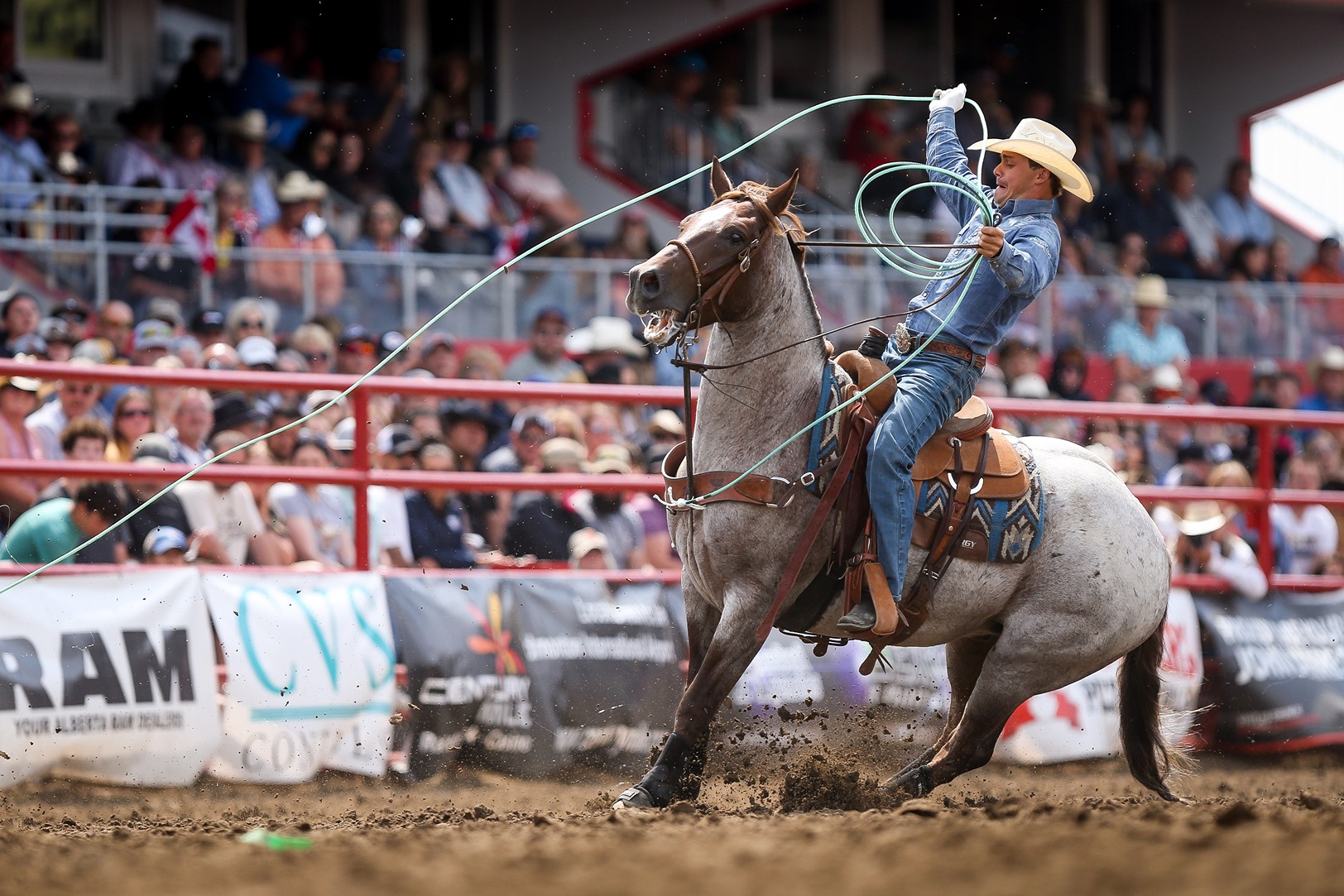
Once the header has caught the steer, he wraps the rope around the saddle horn (dallies) and turns left with the steer in tow. The heeler then ropes both hind legs of the steer and dallies his rope. Once the slack has been taken out of both ropes and the contestants are facing each other, the flag drops and time stops. If the heeler only catches one leg, a 5-second penalty is added. If the heeler throws his loop before the header has turned the steer left, that is called a "crossfire" and the run is disqualified.
The only ladies' event in pro rodeo!
The only ladies' event in professional rodeo, the contestant and her horse must cross the scoreline, run a clover-leaf pattern around three barrels then head back across the scoreline to achieve a time.

Either barrel, on the left or right, may be taken first, but a contestant will be disqualified for not following the clover-leaf pattern. A five-second penalty will be added to the run time for each barrel knocked down, but a contestant may, from a riding position, hold a barrel from falling. The time is generally taken with the use of an electric eye to the hundredths of a second.
A braided manilla rope is the cowboy's only security as he rides a powerful, bucking brahma/cross bull
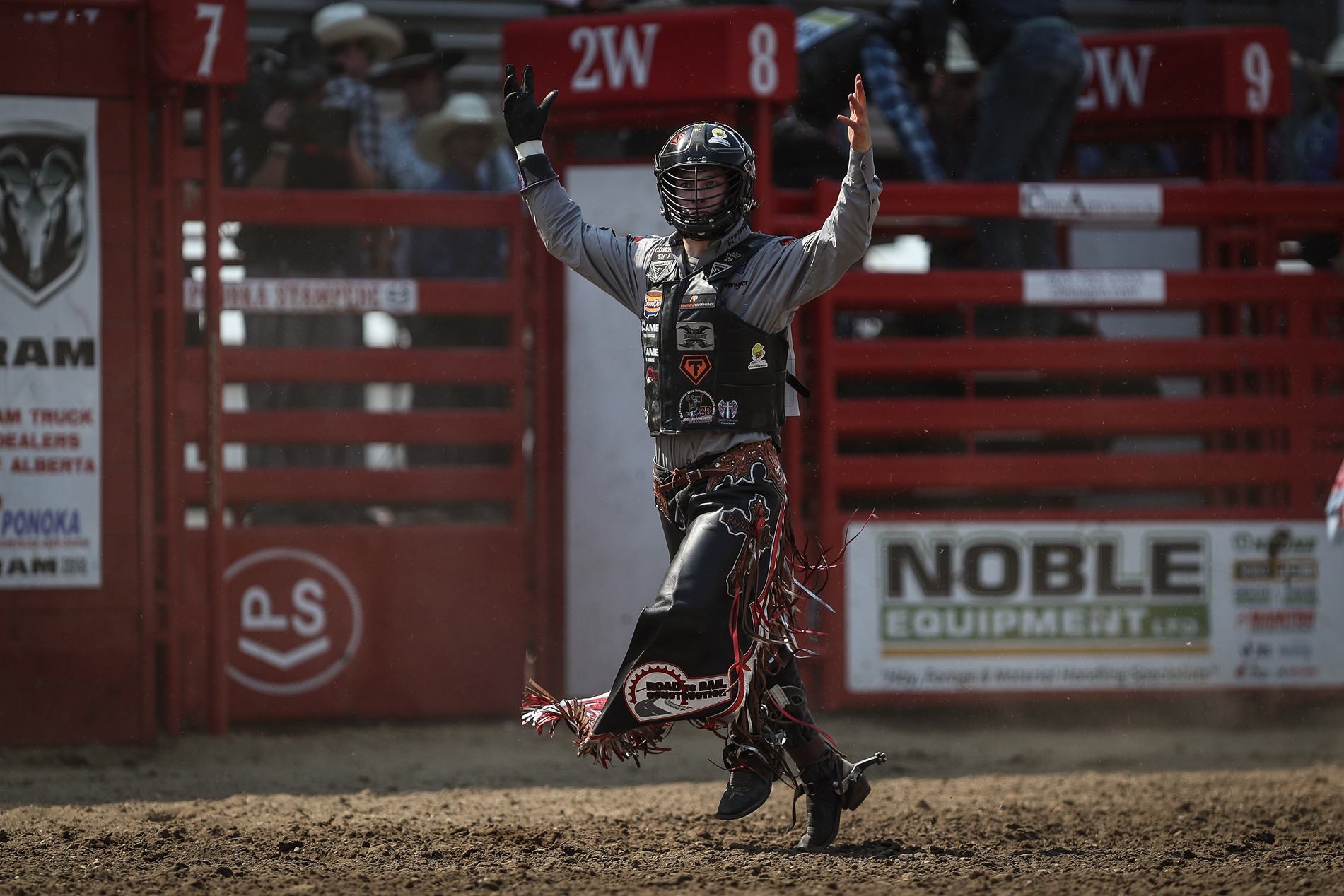
In the bull riding event, a braided manilla rope is the cowboy's only security as he rides a powerful, bucking brahma/cross bull. The rope is wrapped loosely around the bull and a weighted cowbell hangs underneath. When the ride is over, the cowbell pulls the rope free. The bull rider will be disqualified for touching the bull with his free hand or bucking off before the end of the eight-second ride. As it is tremendously difficult just to remain on top of these loose-hided animals, riders are not required to spur.
The successful bull riders keep themselves close to their handhold throughout the whole ride. This prevents the holding arm from straightening and jerking the hand loose. Bull riding, the most dangerous of all rodeo events, demands that a bullfighting clown be in the rodeo arena during each ride. As the cowboy dismounts or is thrown from the bull, the bullfighter distracts the animal until the bull rider reaches safety.
Timing, coordination and strength are essentials
Timing, coordination and strength are essentials for a steer wrestler. The steer is given a headstart and must cross the scoreline before the rider breaks the barrier (a rope) of the starting box. If the rider does break the barrier prematurely, ten-seconds are added to his time.
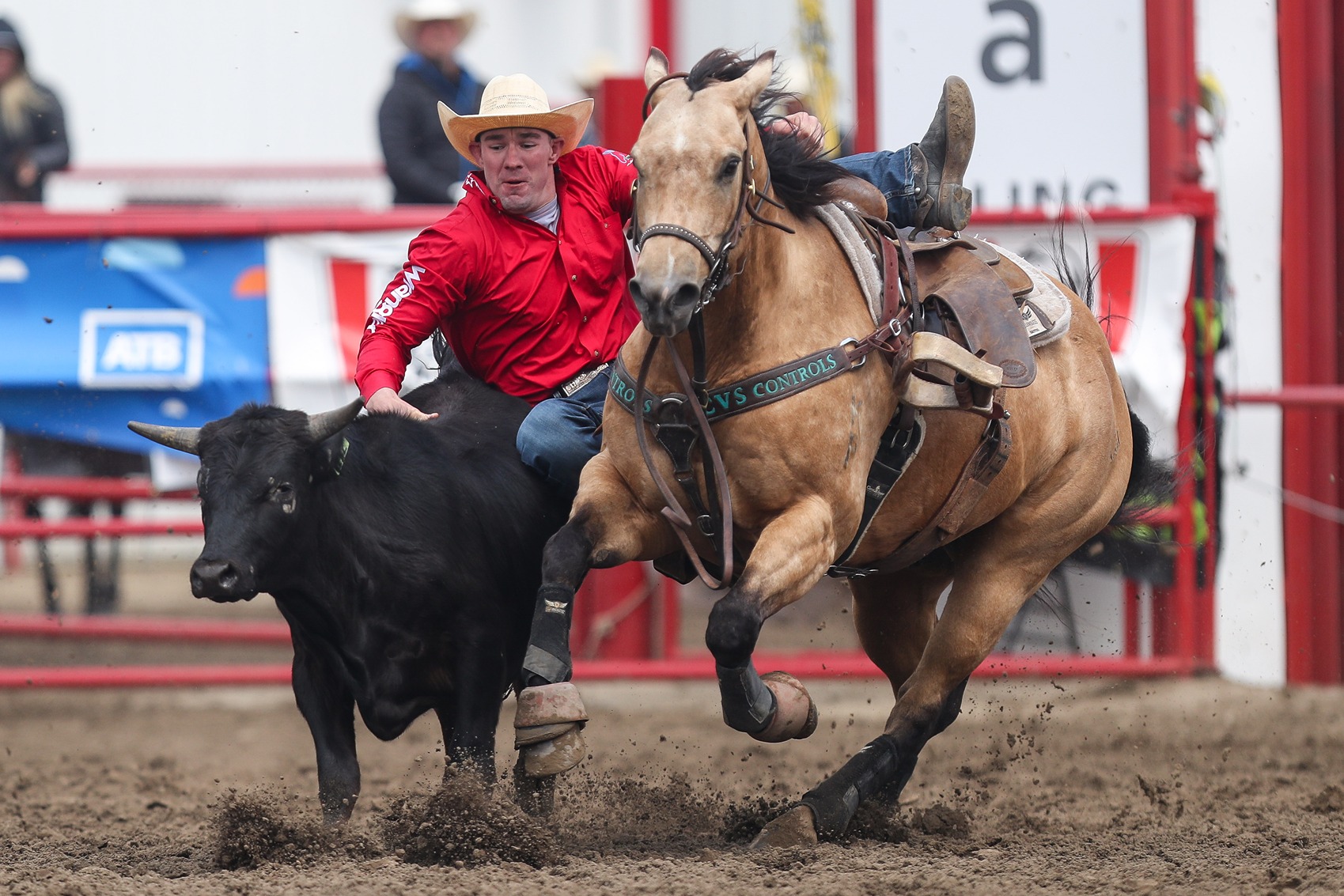
Coming out of the starting box, the horse runs alongside the steer and is trained to run on by as the steer wrestler reaches for his steer. With a firm grip on the steer's right horn, the cowboy hits the ground with his legs extended forward, brings the steer to a dead stop and then using his left hand as leverage under the steer's jaw, he throws the steer off balance and wrestles it to the ground. The steer must be flat on its side before official time is taken. This event requires an extra horse ridden by a hazer, whose job it is to keep the steer running as straight as possible.
Cowboys must be within a certain age bracket.
Competitors must have turned 16 years of age during the rodeo season in question and remain under 21 until the end of the year.
The mechanics and scoring of the novice events are consistent with their professional equivalents. The stock used in these events are often new to the professional arena and are selected to compliment the ability of the rider.
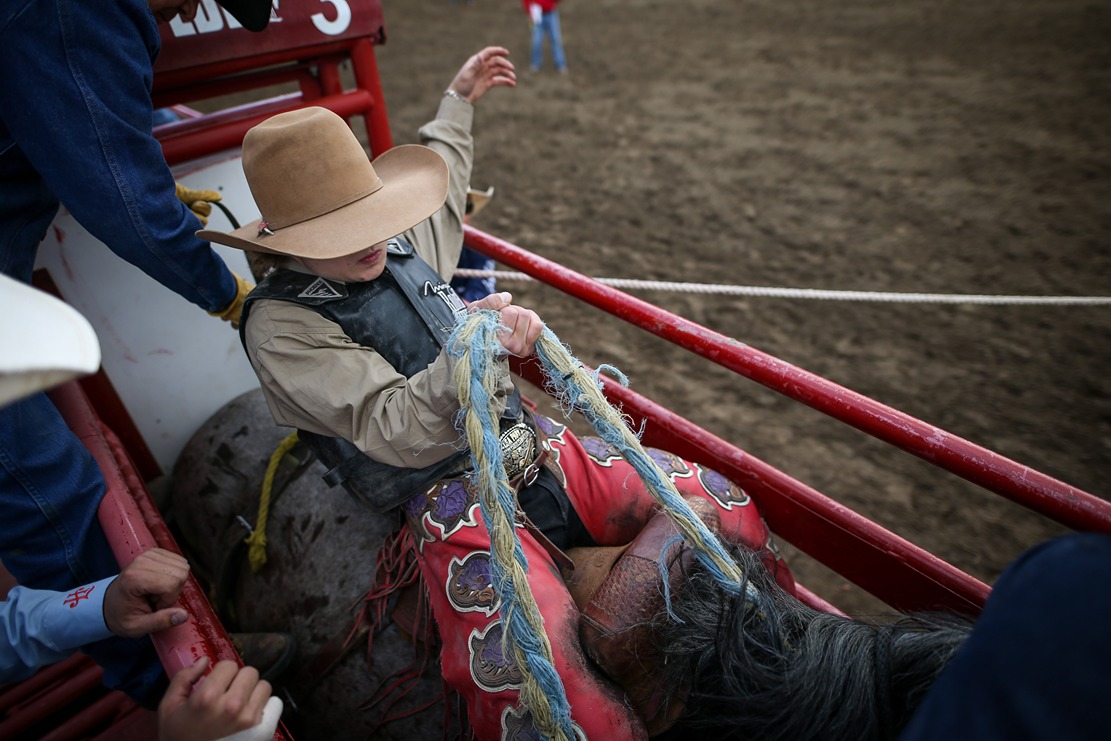
Open to cowboys 11 to 14 years of age
Open to cowboys 11 to 14 years of age as of the current year, Boys Steer Riders must have the reflexes and the body control of a seasoned gymnast if they hope to be successful. A Boys Steer Rider stays on by means of a flat braided rope with a loose handhold, which he may hold onto with either one or two hands. If riding with one, he may not touch himself or the animal during the course of the ride, or they will be disqualified. Using his grip and a little dry resin, he keeps that rope tight around the girth of the Steer, just behind the front legs.
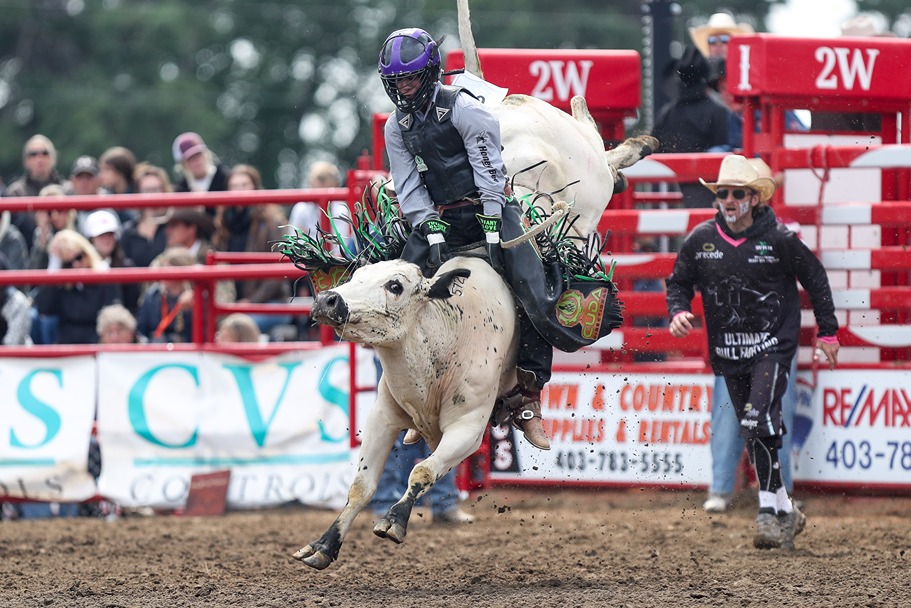
Boys Steer Riders are not required to “mark out” the Steer or spur at all times, but they increase their scores if they do. Once the rider is unseated, whether by his choice or the Steer’s, the bullfighters move in to distract the Steer, allowing the cowboy to get to safety.
Spectators Favorite
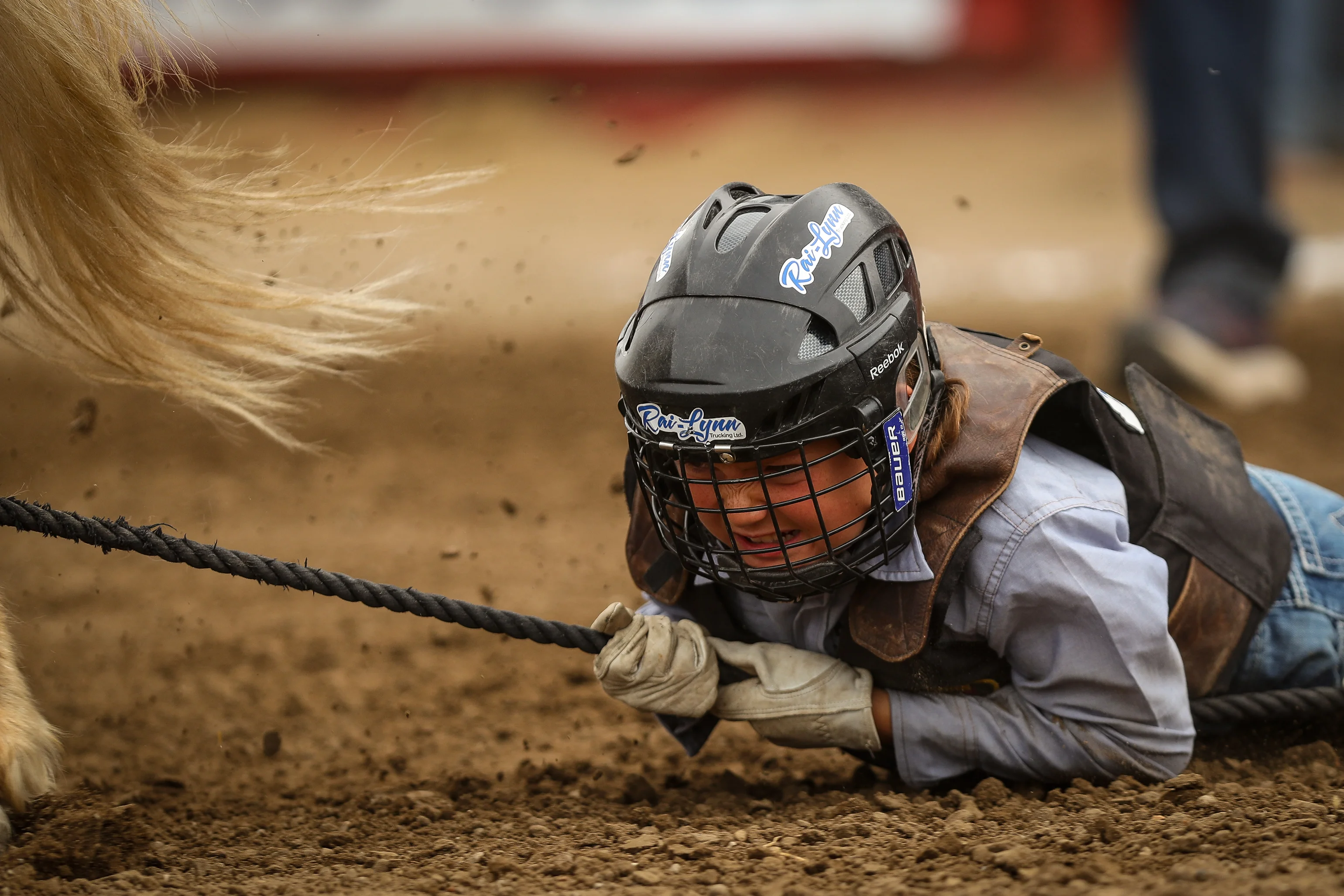
The Kids Wild Pony Race is a Ponoka Stampede "spectators favorite". This wild, exciting, and often-humorous event features future rodeo stars aged 8-12. The kids try to tame a wild pony long enough to get a rider from their 3-person team aboard for a two jump ride. This is a timed event so it is the goal of the team to get the rider on the pony as quickly as possible. Don't miss the Kids Wild Pony Race, these cowboys and cowgirls in the making will be sure to have you on the edge of your seat.
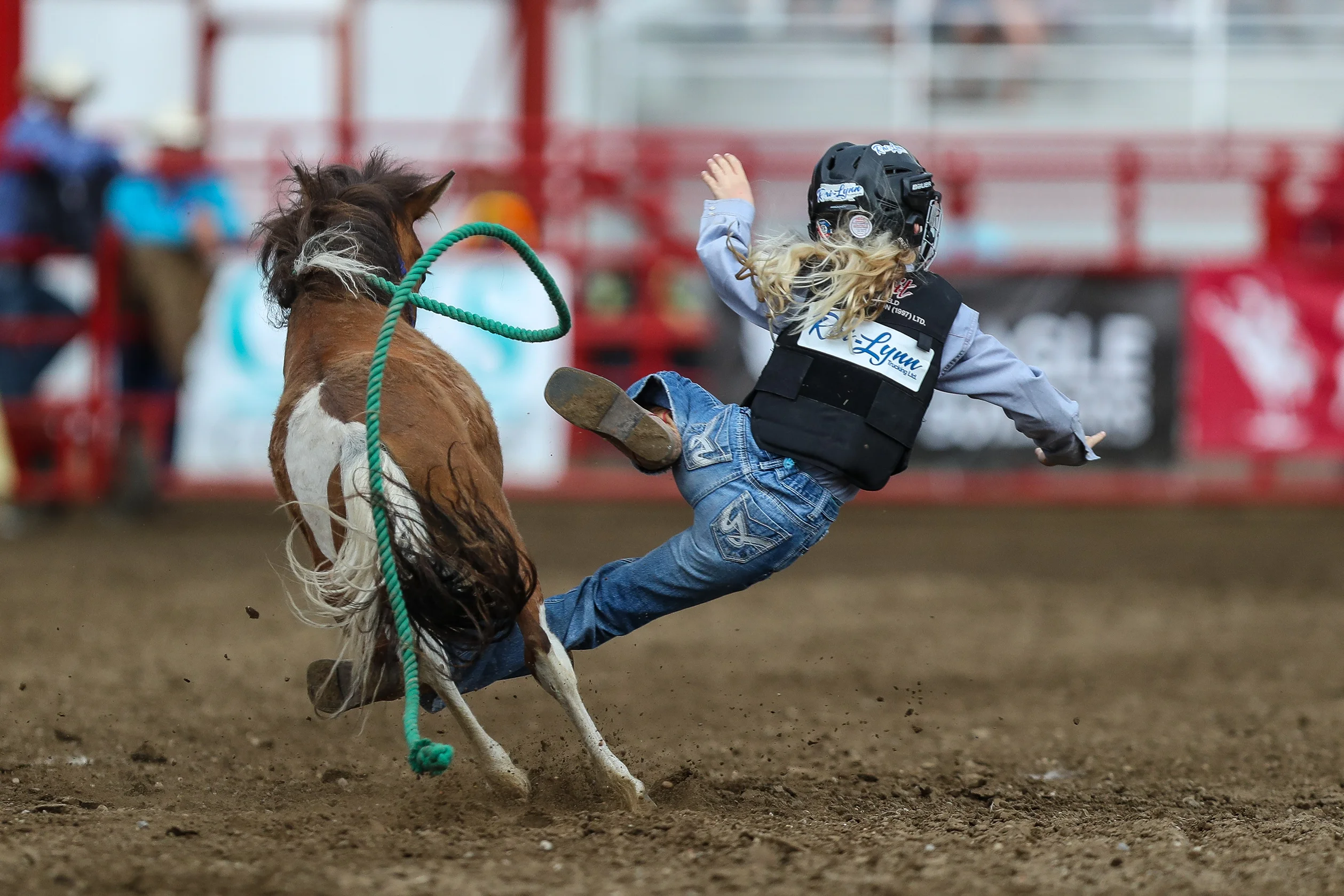

Breakaway roping is a variation of calf roping where a calf is roped, but not thrown and tied. It is a rodeo event that features a calf and one mounted rider. The calves are moved one at a time through narrow runs leading to a chute with spring-loaded doors.
Truly a Team Effort
Truly a team effort, tie down roping demands split-second timing as the cowboy and his horse race against the clock and other competitors to catch and tie a calf. The calf must cross the scoreline before the rider breaks the barrier (a rope across the chute) or a ten-second penalty is added to his score. After roping the calf, the cowboy runs down the rope and throws the animal by hand. More time is lost if the calf is already down when the roper reaches the animal because the calf must be up (standing) before the cowboy may throw it down. Any three legs of the calf must be tied with a piggin' string. The tie must hold for six seconds or the roper is disqualified.

The horse which works with a calf roper must be able to judge the speed of the calf, be able to stop on cue in a single stride, and then hold the rope taut when the roper runs to his calf. Finding a horse that can be trained to do all this well is a difficult task.
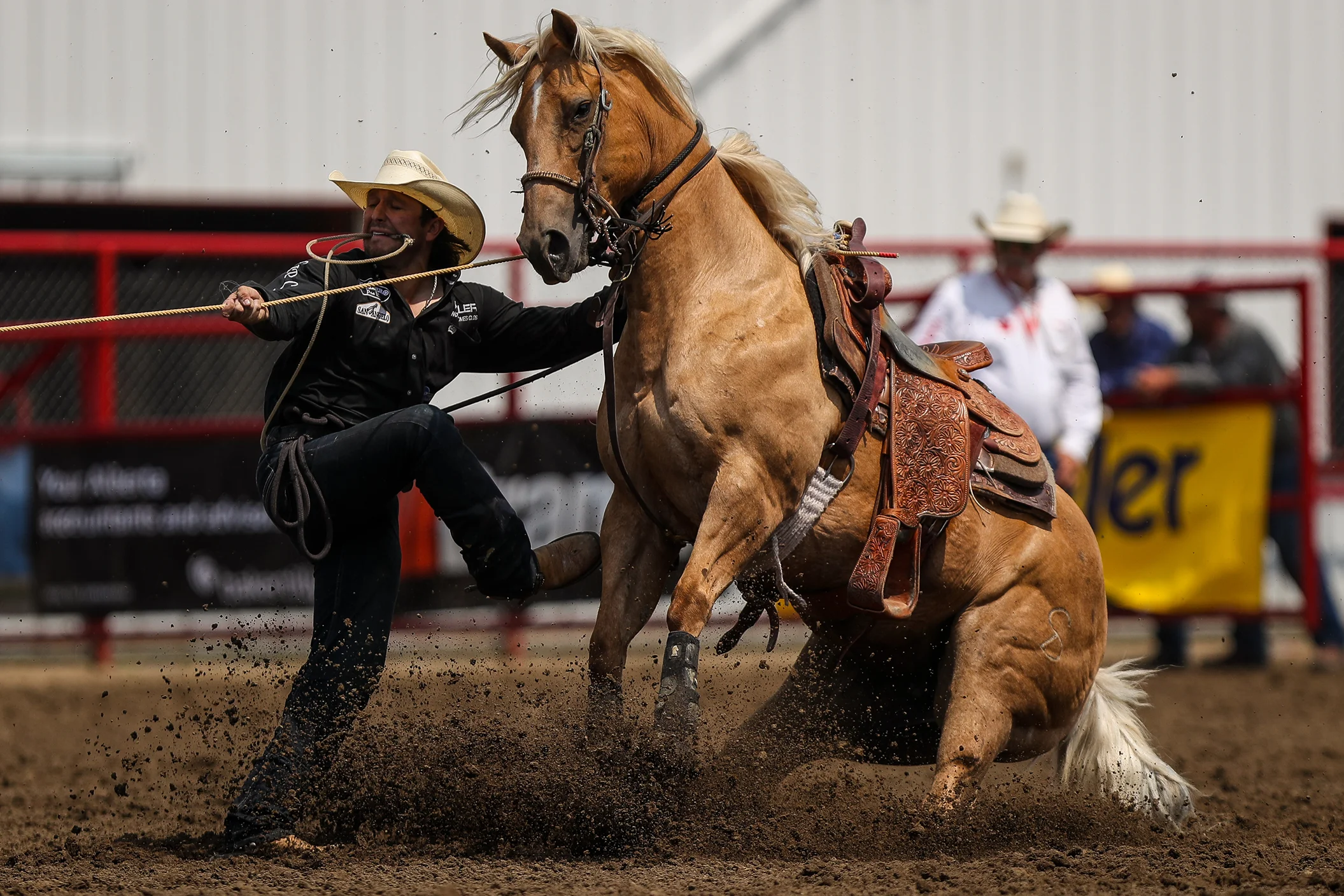
Experience the Women’s Ranch Bronc Riding June 28-30th in the 1pm Pro Rodeo Performance!

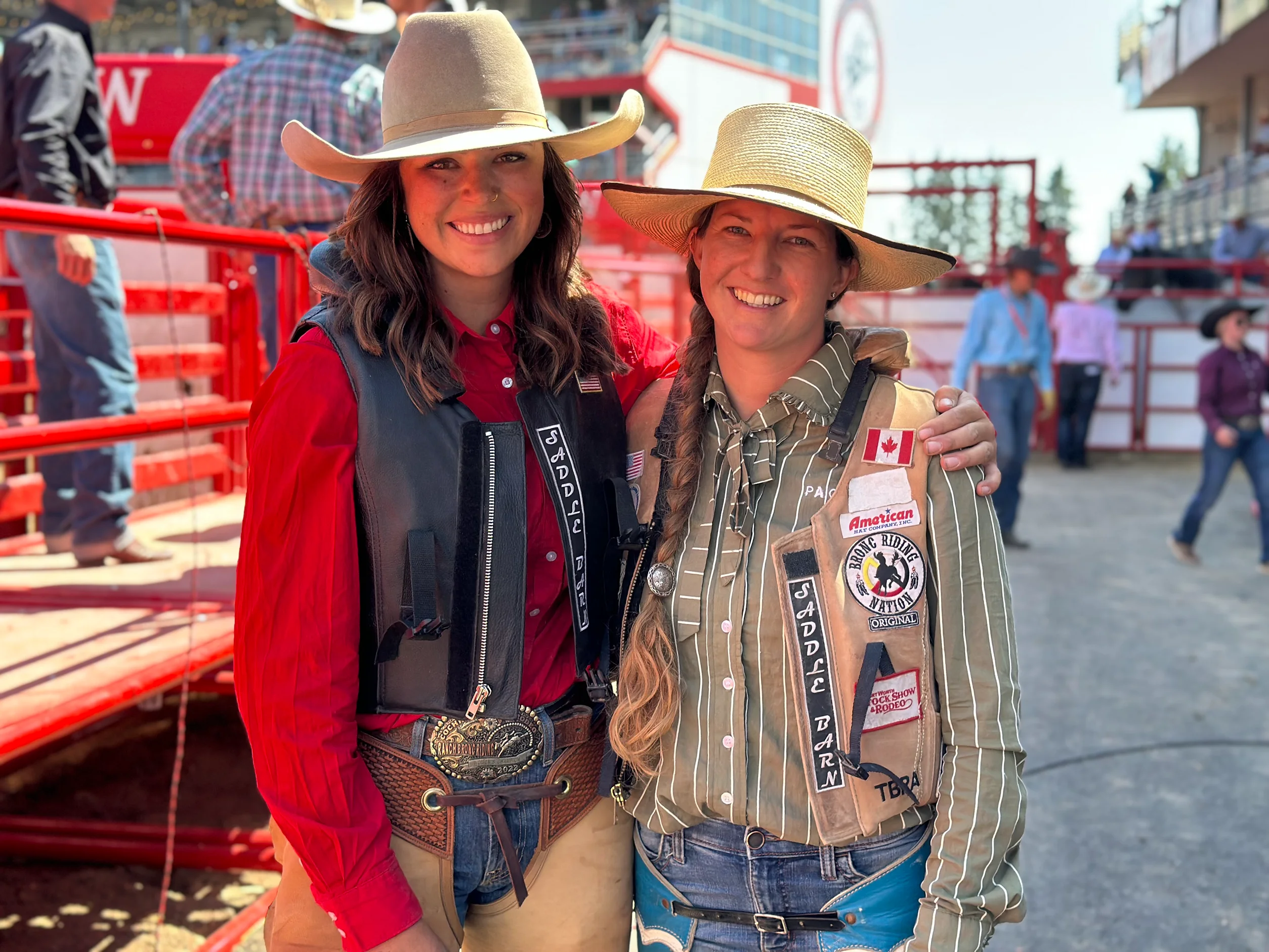
Experience WILD WEST PBR PONOKA Saturday June 28th! Your ticket includes All Pro and WPCA Chuckwagon Races, Kids Wild Pony Races, concert on the main stage and more! Your evening ticket also includes admission to the Showdown Dance Hall (18+)
